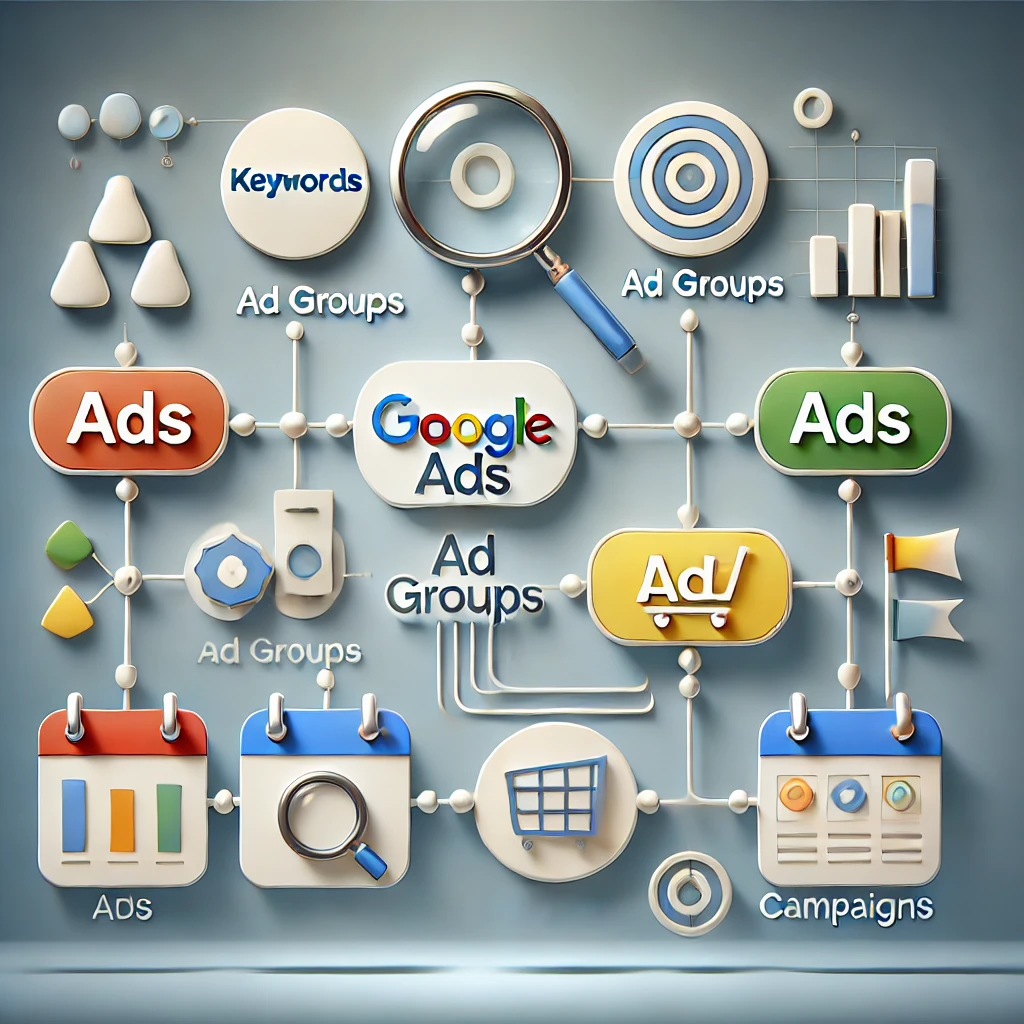Google processes billions of search queries every day. But how does it decide which website to show first? That’s where its search algorithm comes in. Over the years, Google has rolled out many updates to this algorithm to improve how it ranks websites. If you’re new to SEO (Search Engine Optimization), this guide will help you understand the most important updates—and why they matter.
1. Florida (2003)
The Florida update was one of the first major efforts by Google to clean up spammy search results. Before this, many websites were using tactics like keyword stuffing (repeating the same keyword many times) or hidden text (making keywords invisible to users but visible to Google) just to rank higher. The update hit those sites hard, removing many from top positions overnight. It marked the start of Google focusing more on user-friendly and relevant results.
2. Big Daddy (2005–2006)
This wasn’t a content update—it was a change to Google’s internal infrastructure. It improved how Google handled technical SEO elements like:
- How websites redirect from one URL to another.
- Identifying duplicate content.
- Understanding the main version of a page (called canonicalization). This update laid the groundwork for smarter, more efficient crawling and indexing.
3. Jagger (2005)
Jagger came in three stages and focused on backlink quality. At the time, many websites tried to cheat the system by:
- Buying links.
- Participating in link exchanges (you link to me, I link to you).
- Using link farms (networks of low-quality sites linking to each other). Google started penalizing these tactics, encouraging webmasters to earn links naturally through valuable content.
4. Vince (2009)
This update gave an unexpected advantage to big, well-known brands. Google started favoring websites that users seemed to trust, like big retailers or recognized names. While smaller sites complained, Google defended the move by saying it helped show users more reliable results.
5. Caffeine (2010)
Caffeine wasn’t about rankings—it was about speed and scale. It gave Google a new way to crawl and index the web faster. This meant:
- New pages were added to Google’s index more quickly.
- Search results became fresher, especially for breaking news and recent blog posts. This laid the foundation for real-time search.
6. Panda (2011)
Panda was a major update targeting low-quality content. Websites were penalized if they had:
- Very short articles (thin content).
- Lots of ads.
- Duplicated or copied content.
- Useless pages with no real information. Websites that provided unique, useful, and in-depth content were rewarded. This pushed content creators to focus on quality over quantity.
7. Freshness Algorithm (2011)
Google realized that for some searches—like news, sports scores, or trending events—newer content is more helpful. This update made sure fresher content showed up higher for those types of queries. It was great for publishers and blogs that updated their content frequently.
8. Page Layout Algorithm (2012)
This update focused on user experience. If a webpage had too many ads at the top (above the part you see without scrolling), it got penalized. Google wanted to ensure users could see valuable content right away—not be bombarded by ads.
9. Venice Update (2012)
Venice made Google’s results more local. For example, if you searched for “plumber,” instead of getting nationwide results, you’d start seeing plumbers near your location. This helped small and local businesses appear in searches even without users typing a city name.
10. Penguin (2012)
Penguin cracked down on spammy backlink practices. Google started ignoring or penalizing links that were:
- Bought.
- Part of link schemes.
- Using exact-match anchor text (e.g., too many links saying “buy cheap shoes”). Sites had to clean up their backlink profiles and earn links from trustworthy sources.
11. EMD (Exact Match Domain) Update (2012)
Some sites used exact-match domain names (like bestdealsonphones.com) to rank easily—even with poor content. This update made sure that just having a keyword-rich domain wasn’t enough. You needed to back it up with quality.
12. Payday Loan Update (2013)
This update focused on very spammy industries—like payday loans, casinos, and adult content. These industries had a lot of black-hat SEO, and Google applied stricter filters to prevent them from dominating search results.
13. Hummingbird (2013)
Hummingbird helped Google understand search intent rather than just individual keywords. For example, if someone searched “How to fix a leaking tap,” Google started looking for content that actually solves that problem—not just pages that repeated the words “fix” and “tap.” It laid the groundwork for voice search and conversational queries.
14. Pigeon (2014)
Pigeon improved the accuracy of local search results. It tied Google’s local results more closely to traditional ranking factors (like backlinks and content quality). This meant:
- Local SEO became more competitive.
- Businesses with better websites and strong reviews got better rankings in local results.
15. Mobilegeddon (2015)
As mobile searches began to outnumber desktop searches, Google made mobile-friendliness a ranking factor. If your site didn’t work well on phones, it could drop in mobile search rankings. This update pushed site owners to:
- Use responsive design.
- Improve loading times on mobile.
- Make navigation mobile-friendly.
16. Quality Updates (2015–ongoing)
These updates (sometimes called Phantom updates) didn’t target specific tactics. Instead, they adjusted how Google judged overall content quality. They looked at factors like:
- Usefulness of the information.
- Trustworthiness of the site.
- How users interacted with content (like bounce rate or time on page). It encouraged publishers to create genuinely helpful resources.
17. RankBrain (2015)
RankBrain brought machine learning into Google’s algorithm. It helped Google understand vague or unique searches by analyzing:
- Past user behavior.
- Similar phrases or concepts. This meant Google could deliver better results even if it had never seen the exact search phrase before.
18. Fred (2017)
Fred targeted sites that prioritized making money over helping users. This included:
- Sites full of ads.
- Content created only to rank in search and earn clicks (clickbait).
- Affiliate-heavy pages with little useful info. Websites that focused on user value, clear navigation, and in-depth content were rewarded instead.
19. Helpful Content Updates (2022–2024)
These updates introduced a new ranking signal aimed at identifying content that’s actually helpful to users, not just designed to rank. Google now evaluates whether a site’s content is:
- Written for people or search engines.
- Genuinely helpful, informative, and relevant.
- Demonstrating real expertise or experience. If Google determines your content was created mostly for clicks or SEO manipulation, your whole site might get downgraded in the rankings.
20. Product Reviews Updates (2021–2023)
Google began refining how it ranked product reviews. It now favors reviews that:
- Include original research or insights.
- Demonstrate hands-on use.
- Compare products fairly and comprehensively. Generic or affiliate-heavy reviews without substance started losing visibility. Review pages now need depth and real user value to compete.
21. Spam Updates (2023–2024)
Google improved its SpamBrain AI system to detect a wider range of web spam, including in different languages and formats. These updates target:
- Cloaking and sneaky redirects.
- Automatically generated (AI) spam.
- Manipulative link tactics. Websites using deceptive methods are now identified and penalized much faster.
22. Core Updates (2023–2025)
Google regularly releases core updates that adjust how it assesses content overall. These updates:
- Don’t target specific issues.
- Can impact rankings widely.
- Reward sites with high-quality, helpful content. After a core update, sites may see sudden gains or drops, often based on content depth, authority, and page experience.
23. Site Reputation Abuse Update (May 2024)
Some big-name sites started allowing low-quality or spammy third-party content to be published under their trusted domain names. Google rolled out this update to penalize that practice. It ensures that even high-authority sites can’t get away with publishing junk just for traffic or affiliate commissions.
24. AI Overviews and Search Generative Experience (2023–2024)
Google began testing AI Overviews, which generate summaries and answers directly in search results using generative AI. This:
- Affects how users interact with search results.
- May reduce clicks to traditional organic results.
- Increases the importance of featured snippets, structured data, and content clarity. For content creators, it means optimizing for user satisfaction and clarity is more important than ever.



